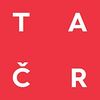IT4Innovations cooperates with the ENET centre, which is part of VSB – Technical University of Ostrava, in the Centre for Energy and Environmental Technologies (CEET) project. The project is supported by the Technology Agency of the Czech Republic, which financially supports research and innovation.
The CEET project aims to find solutions for the efficient transformation of alternative fuels, wastes and by-products into recovered chemicals and useful forms of energy. However, CEET also addresses their storage and efficient use, with the support of the digital twin’s most modern methods and technologies, in line with the principles of the circular economy. Launched in August of this year under the command of Professor Stanislav Misak of the ENET VSB-TUO Centre, the project is scheduled for five years. Besides VSB-TUO (ENET and IT4Innovations), other participants in the project are the Institute of Plasma Physics of the CAS, v.v.i. and the SMOLO a.s., APT, spol. s r.o. and ABB s.r.o. companies.
IT4Innovations is responsible for creating the CEET digital twin. The development of this complex energy system will allow virtual modelling of selected operational states of the entire technology chain. This is composed of alternative fuel processing equipment and equipment for separation, filtration, and the use of hydrogen from those processes (e.g., in hydrogen car stations). The selected technology chain will be mathematically defined into a virtual twin for selected operating states, and the virtual model will include a building information model (BIM) for the entire test polygon.
“A digital twin is a software (virtual) copy of a real system that allows you to remotely monitor and evaluate the state of a real object. But the digital copy is not just a duplicate of reality, for it contains, thanks to the dreamers, measured data about the object and its condition. Therefore, thanks to the digital twin, different scenarios can be modelled and evaluated, finding vulnerabilities, anomalies, and finding optimal solutions that can then be applied to control a real object. The digital twin uses, among other things, sensors, data networks, and modern prediction algorithms, including artificial intelligence methods,” explains Pavel Praks from the Advanced Data Analysis and Simulation Lab of IT4Innovations. As part of the development of the CEET’s digital twin, we are testing the artificial intelligence methods of the Austrian SymReg.at project. We also analyse automated machine learning (AutoML) methods. IT4Innovations has a large number of machine learning methods at its disposal, but the question arises as to which method to use and how to properly set its parameters. Automated machine learning methods help facilitate the selection of machine learning algorithms, recommend appropriate parameter settings as well as data preprocessing, and improve the ability to detect complex patterns in big data (http://automl.info/automl). The advantage is to refine prediction models, the disadvantage, on the other hand, is the high computational power. However, calculations can be speeded up by using IT4Innovations supercomputers able to run the method tests in parallel.
WHAT IS THE DIGITAL TWIN?
The digital twin’s roots date back to the 1970s, when an oxygen tank exploded on the Apollo 13 mission, endangering the mission and crew. However, NASA had a faithful spacecraft mock-up, simulating both the malfunction and the subsequent solution used to repair the spacecraft. Nowadays, they use computer modelling instead of mock-ups. Similarly, a digital twin of the production process is being created. Sensors monitor the status of the device, and data is transmitted by the computer network and stored in the database. Thanks to the mathematical model and information on the history and current state of the device, the entire manufacturing process can be simulated by a computer, including wear and tear on the components, and design, among other things, an optimal maintenance strategy.
 The project, grant no. TK03020027 CEET – Centre for Energy and Environmental Technologies is co-funded by the Technology Agency of the Czech Republic under the THETA Programme for Applied Research, Experimental Development, and Innovation
The project, grant no. TK03020027 CEET – Centre for Energy and Environmental Technologies is co-funded by the Technology Agency of the Czech Republic under the THETA Programme for Applied Research, Experimental Development, and Innovation
